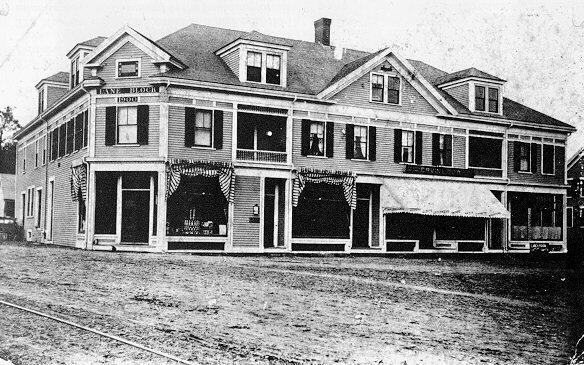
“The Lane Block, Lafayette Road & High Street, built 1900:
The Lane Block, one of the first purely commercial and mercantile spaces in Hampton was built in 1900 as a result of the dislocations of several businesses by the construction of the railway overpass on Exeter Road. The Block first housed Howard Lane’s general store and Ervin Dow’s department store. Charles Orrin Stevens was the builder of both the Lane Block and Howard Lane’s residence on Lafayette Road, now the headquarters of the Foss Manufacturing Company. Note the trolley tracks in the left foreground.”
[Hampton Historical Society pictorial calendar 1995.]
The Lane Block, one of the first purely commercial and mercantile spaces in Hampton was built in 1900 as a result of the dislocations of several businesses by the construction of the railway overpass on Exeter Road. The Block first housed Howard Lane’s general store and Ervin Dow’s department store. Charles Orrin Stevens was the builder of both the Lane Block and Howard Lane’s residence on Lafayette Road, now the headquarters of the Foss Manufacturing Company. Note the trolley tracks in the left foreground.”
[Hampton Historical Society pictorial calendar 1995.]

The Tuck [Memorial] Museum was founded in 1925 by the newly-formed Meeting House Green [& Historical) Association: The Honorable Edward Tuck of France, a descendant of one of Hampton’s founding families, donated funds to purchase the Frank Fogg “home place” on which was constructed a log cabin to represent the original meeting house of 1638. The Museum itself was located in a new addition at the back of the farmhouse. Founder’s Park, in the foreground, was established as a monument to the founding families of Hampton. Stones situated around the perimeter, honor each of the families, as well as those towns established within the original boundaries of Hampton.
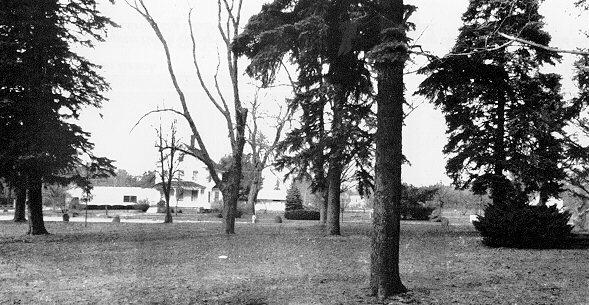
The Tuck Museum, at 40 Park Avenue, is still the home of the Hampton Historical Society. Situated on the grounds are the main building which houses furniture, paintings, military items and other artifacts pertaining to Hampton and vicinity; the Farm Museum exhibiting early tools, farming and fishing equipment; the Fire Museum containing an antique fire pumper [“Winnacunnet No. 1”] and fire fighting apparatus; and the furnished 1850’s District School house. The Museum collects and maintains objects that represent the material culture of Hampton and the region which was at any period encompassed by the town during settlement.
The Hampton Historical Society exists to honor the founders of the Town of Hampton, to promote and honor the history and heritage of the town and its inhabitants, and to preserve such history for future generations. The Society not only preserves and maintains the museum and its contents, but also hosts numerous special tours, programs, and reunions, makes presentations to schools and civic groups, and assists museum visitors.
Presently, there are over 300 members of the Society which is open to any person supportive of its goals. Information on membership, visiting hours, tours or programs may be obtained by writing the Hampton Historical Society, Post Office Box 1601, Hampton, NH, 03843.
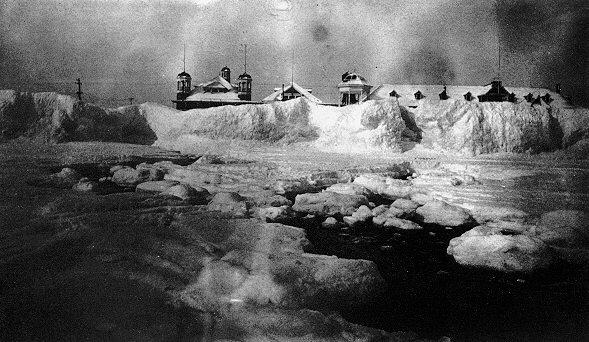
This view shows Hampton Beach as tourists seldom see it, with ice floes covering the sandy beaches and the snow banks nearly obscuring the towers of the [Hampton Beach] Casino and the old bandstand.
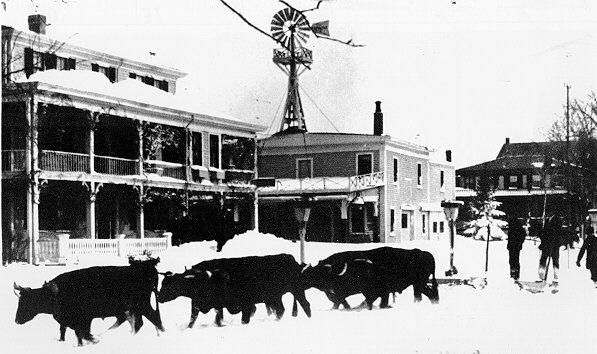
In the early years of the century no attempts were made to clear road surfaces completely of snow. After a heavy snowfall it was far more common to pack the snow down by means of a large roller. Here, however, just in front of the Hotel Whittier, a team of oxen appears to be pulling a small plow fashioned from a sledge.
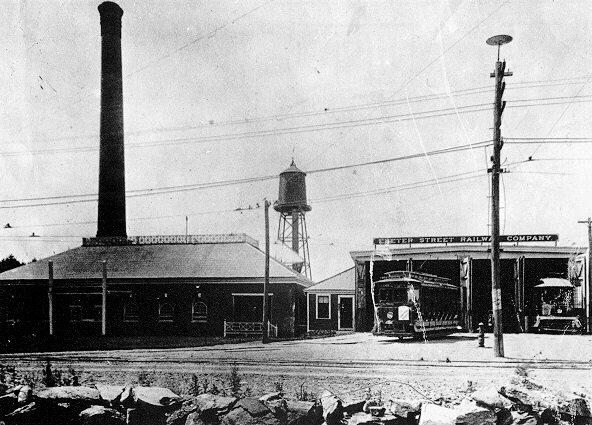
Circa 1900.
Although the trolleys of the Exeter Street Railway and their tracks are long gone from Hampton’s streets, the Car Barn still stands on the Exeter Road, although the cars now serviced there are of a more recent vintage. The barn was built in 1897 to house and repair the trolley cars which traveled to Hampton and Hampton Beach from as far away as Amesbury and Haverhill. Service on the line ended in January 1926. [The ‘car barn’ on the right burned to the ground in 1907 with the loss of many trolley cars.]
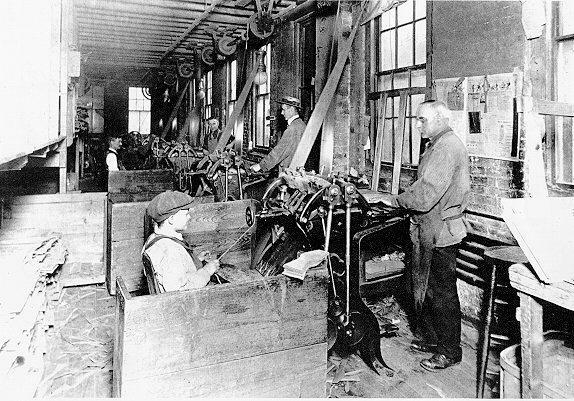
Hampton in the late nineteenth century, along with Exeter and Newburyport, was a center of the shoe industry, although much of the activity took place in homes or small workshops. In 1887, a group of Hampton businessmen built a large factory on High Street for the manufacture of shoes. Over the years, a number of short-lived firms occupied the premises, but in 1918 Charles E. Greenman purchased the building and began a shoe business which lasted until the 1970’s. The building still stands, although it is now missing the third story [due to a fire].
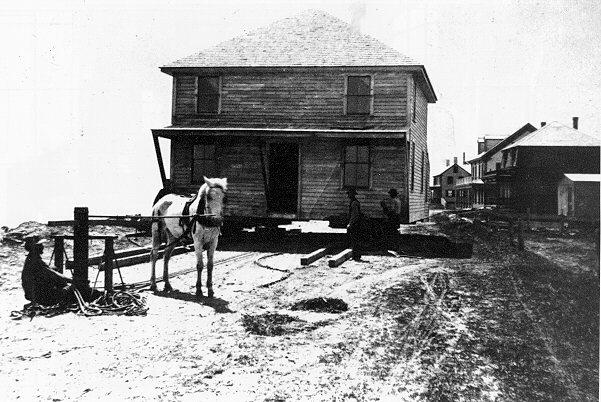
Moving a house could mean more than just packing up and moving from one building to another. It was not uncommon for entire houses to be moved from place to place. The lack of cellars in houses along the beach meant that little preparation of a new site was necessary. Here a house mounted on blocks is being moved on the rails by means of the horse-powered winch. It was a slow process, but one less expensive and time-consuming than building a new house.
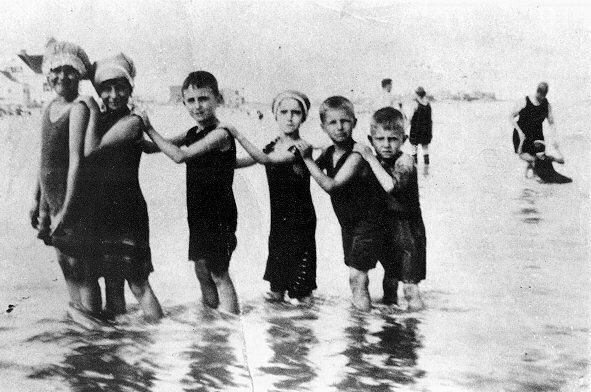
The beaches of Hampton attract children from all over the country, as well as the town’s own children. A group of Hampton children play in the water at North Beach in this 1924 photograph. Modest as their bathing suits seem to us now, the bathing costumes of 1924 were deemed to be so revealing that a “bathing censor” was appointed in an attempt to regulate beach dress.
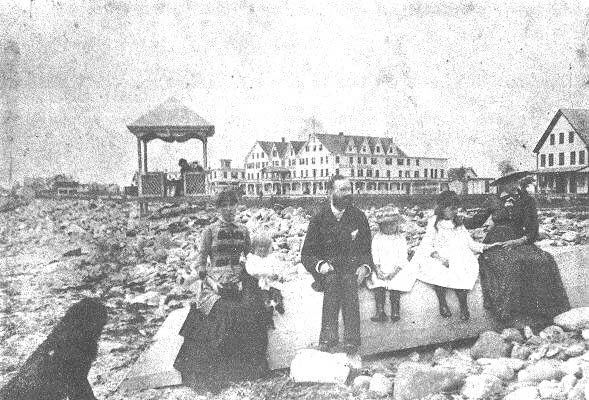
Tourists flocked to Hampton Beach in the late nineteenth century to enjoy the beaches and salt air. Large hotels, such as the Ocean House, which stood just north of Church Street, were built to accommodate visitors like these perched on an upturned fisherman’s dory. Although the beach was once dotted with such hotels, they have all disappeared, victims of fire or new fashions in hotel design.
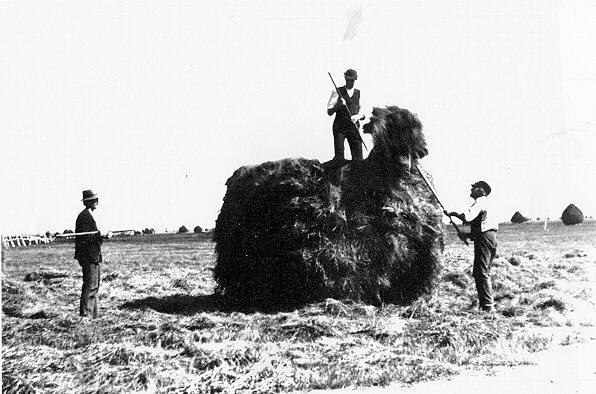
The low-lying marshes were a fertile source of hay for the cattle of Hampton from the founding of the town in 1638 through the nineteenth century. The hay cut at low tide was pitched onto high staddles, which stood above the waters which came in the high tide. Farmers were accustomed to inspecting their hay by boat. Scenes such as this were common all along the seacoast from Rye to Newburyport.
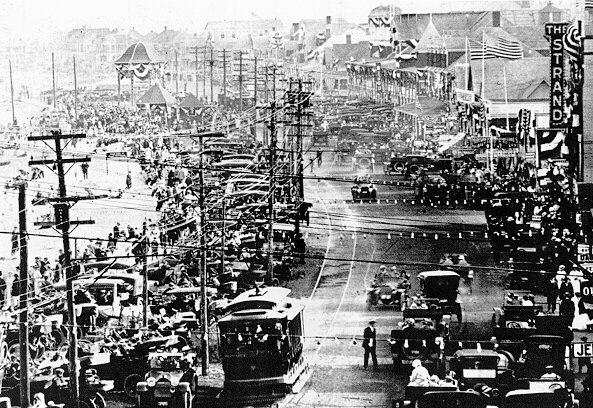
Traffic congestion at Hampton Beach is not a new phenomenon. Despite the crowded trolleys, Carnival Week in September, 1915 brought a huge number of tourists in cars, which have overflowed the limited parking areas and packed the roadways where there seems to be little order. Note the bunting decorating the Strand Theater and the Casino, as well as the strings of electric lights stretched across the street.
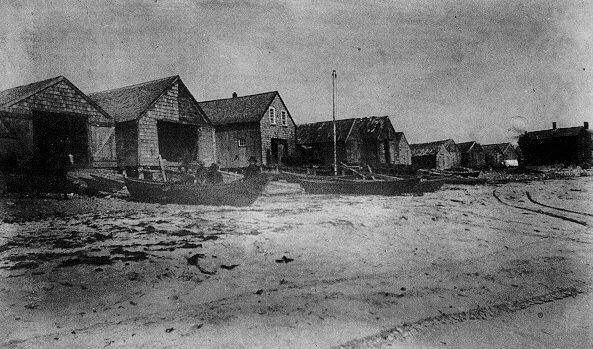
Hampton was originally a community of farmers and fishermen, with some combining both occupations. Until the twentieth century, boathouses such as these were a prominent feature of the beach landscape. Most of the local fishermen fished from dories like those on the beach and then brought their catch back to be sold right from the boathouse. Today two fish houses still stand near the end of High Street.
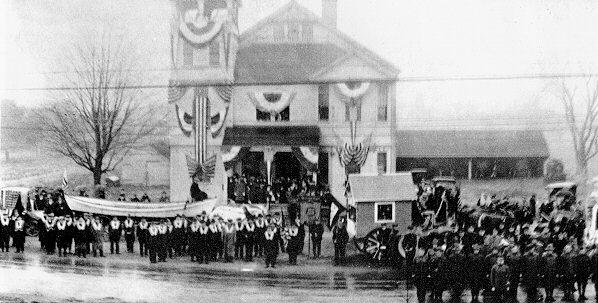
The celebration of the first anniversary of the end of World War I featured a reception, a banquet, and a big parade with bands, floats, and a marchers from local organizations, as well as veterans from the wars as remote as the Civil War. This is a detail of a large panoramic photograph of the parade.
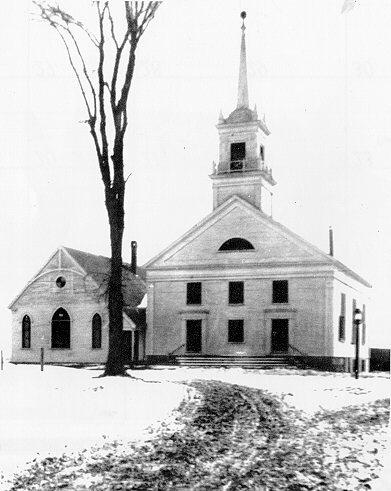
This, the sixth building to house the original church of Hampton, dates from 1844, while the [Webster] chapel at the left was added in 1884. The church itself has been altered several times because of fire damage or changes in fashion. This old view shows the facade with the original two front door and broad steps. Note that the road in front is still dirt and that a gas street lamp lights the corner.